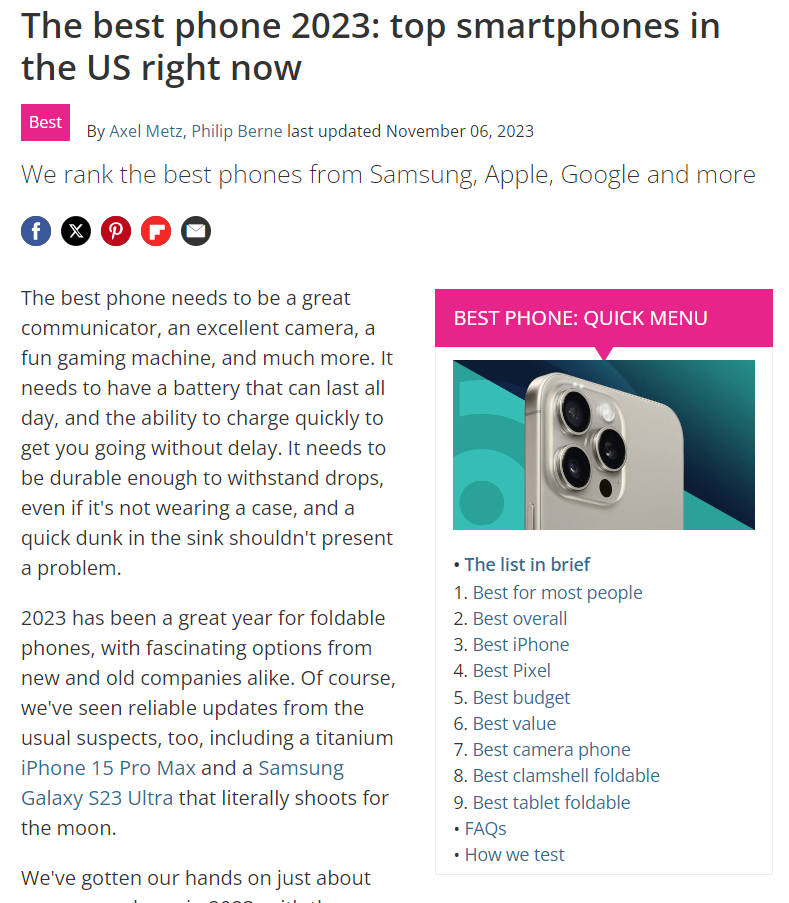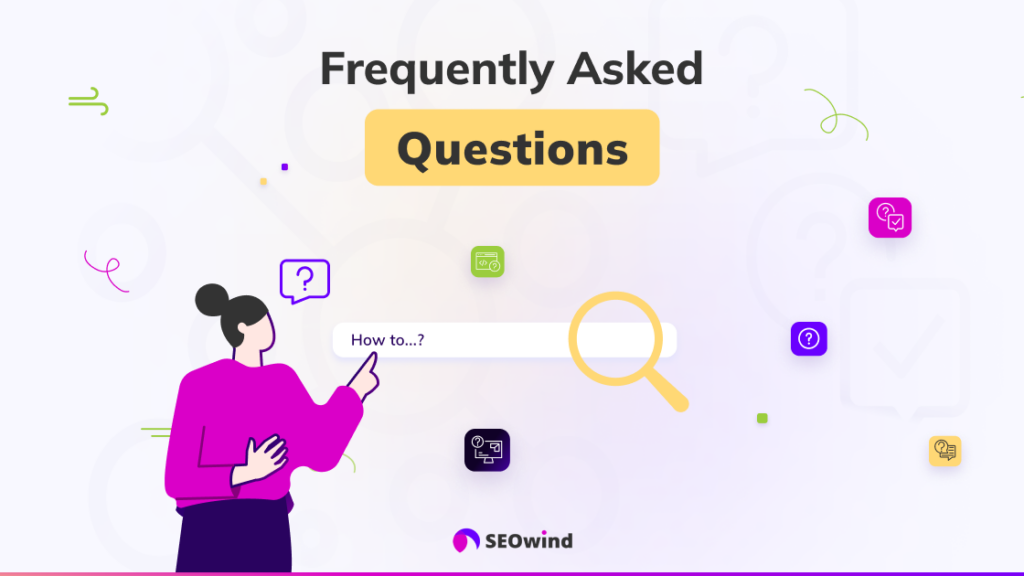In content marketing, listicles have become a staple format that captures readers’ attention and delivers information in an easily digestible package. Easy to create yet captivating when done right, listicles can drive significant engagement for your website or personal blog. If you’re interested in mastering this popular but often misunderstood art form, read on as we explore the fundamentals of listicle writing and share valuable examples and steps to craft one that stands out from the competition.
What is a Listicle?

A listicle is a piece of written content that combines the structure of a traditional article with the straightforward appeal of numbered or bullet-pointed lists. The term comes from a combination of “list” and “article.” This unique fusion offers informative content and quick readability, making listicles particularly appealing for today’s fast-paced online environment where attention spans are short.
Typically, listicles are structured around a central theme, topic, or question; each item should provide insight or opinion about this core concept. Notable listicle examples may include top 10 rankings, tips for achieving success in specific areas, or compilations of suggested resources. The subject matter can range vastly from entertainment to practical advice, so long as it resonates with your target audience and adheres to an organized format.
What is the Structure of a Listicle?
Understanding its structure and how to arrange its components logically is essential.
Let’s look into its five key elements:
- Introduction: The introduction sets the tone for your listicle and provides the necessary context for the reader. It should be concise yet informative. In a few sentences, you give a brief overview of what they can expect from the rest of the blog post while establishing your credibility as an authoritative source of information.
- List items: These are the backbone of your listicle and must be thoughtfully selected, organized, and presented. Be sure to choose items that will surprise or inform readers while maintaining consistency with your topic. Organize them logically (e.g., chronologically or categorically) so readers can follow your thought process throughout the piece.
- Subheadings: Subheadings divide your list items into thematic categories and make navigation easier for readers who may want to skim through portions of your article quickly. Ensure subheadings are brief but descriptive enough to convey each section’s main point effectively.
- Explanations: Each list item should include accompanying descriptions that illustrate why it merits inclusion in your listicle or offer additional insight into its significance or impacts relevant to the primary topic discussed in your introduction.
- Conclusion: Wrap up your listicle with a firm conclusion that reinforces key takeaways or insights gleaned from examining all entries on your list collectively. This closing section should leave readers feeling informed and engaged, ideally leading them back towards further contemplation about all ideas explored throughout your piece.
By adhering to this comprehensive structural framework when creating a winning listicle, you ensure that readers can easily consume and digest all the points you’re sharing. Your ability to guide them through this convenient format will leave a lasting impression and demonstrate your capabilities as a skilled content writer capable of crafting engaging successful listicles.
Examples of Successful Listicles That Rank Well on Google

When browsing the internet, it’s hard to miss one specific type of content that almost every high-ranking site seems to have – listicles. Now, if you are wondering what sets apart these high-performing pieces, let’s delve deeper into some excellent examples and dissect their winning elements.
Example 1: Listicle by Buzzfeed

Buzzfeed has masterfully harnessed the power of listicle format content. The company generates engaging lists incorporating pop culture, humor, lifestyle tips, and anything else you can imagine. One memorable example is “24 Photos That Will Simply Restore Your Faith In Humanity“, an uplifting piece with a universal appeal.
Example 2: Listicle by TechRadar

The tech industry isn’t left out either; TechRadar regularly features top-ranking lists such as “The best phone 2023: top smartphones in the US right now” capturing consumer interest while feeding into our desire for expert opinions and recommendations.
Example 3: Listicle by New York Times
The experts at the New York Times annually release a list of places to travel to. Here is the last one: 52 Places to Go list for 2023.
Why is the Listicle Format So Popular?

Listicles have gained prominence primarily because they cater to readers’ need for quick and easily digestible information. In this section, we’ll explore two key reasons listicles are such a widely favored form of content: their ability to convey clear expectations and their knack for presenting information in manageable chunks.
Listicles Tell You What to Expect
One significant advantage of listicles is that they give readers a clear idea of the content from the title. By adopting a list format, writers can create articles that combine simplicity with relevance, making it easy for readers to determine whether or not the piece would be interesting or valuable to them. Furthermore, by specifying the number of points mentioned within a listicle (e.g., “10 Tips for Better Sleep”), authors establish clear expectations regarding the length and depth of the article—something highly appreciated by those who value concise and straightforward content.
Listicles Break Information Apart Into Manageable Chunks
As modern-day consumers of online content, we often find ourselves short on time or patience, seeking rapid answers or insights. This is where listicles prove remarkably effective. They break complex topics into smaller, more digestible segments, allowing readers to quickly process critical aspects without feeling overwhelmed.
The structure of listicles inherently promotes scannability as well. Since each point is usually accompanied by a heading or subheading (followed by a brief explanation), readers can swiftly skim through an article and focus on sections that genuinely pique their interest. Additionally, by presenting information in bite-sized portions rather than long paragraphs or large blocks of text, writers wielding listicle formats help reduce cognitive load—a concept rooted in psychology—making it easier for audiences to absorb and retain knowledge.
Search engines like List Format
List-based articles often rank high in search engine results due to a number of factors. Firstly, they offer easily digestible content for readers, breaking down complex subjects into bite-sized pieces. This user-friendly nature of listicles appeals to the short attention spans of modern internet users.
Secondly, listicles tend to generate more social shares and engagement, which search engines like Google view as a signal of quality content.
Thirdly, list-format articles are optimized for mobile devices, which is crucial considering the growing dominance of mobile browsing.
Additionally, listicles often incorporate useful keywords and phrases that are relevant to the topic, making it easier for search engines to index and rank the content.
Lastly, the clear structure and headings within listicles provide search engines with a better understanding of the content, further improving their chances of ranking higher in search results. Overall, listicles have carved out a unique niche in the world of content creation and search engine optimization, making them a popular choice for users and creators.
The Qualities of a Good Listicle

I’ve taken a close look at many successful listicles across different niches. While they may vary significantly in terms of subject matter or industry focus, there are shared characteristics that generally contribute to their popularity. Let’s discuss essential qualities your list article should have.
Relevance and Interest
The foundational quality of any successful listicle is its relevance to the target audience. Choose up-to-date topics, sparking interest and resonating with readers. Also, prioritize subjects related to your niche, showcasing your expertise in the chosen field.
Unique Angle or Perspective
With countless listicles available online, distinguishing yours from competitors becomes crucial. Stand out by providing a fresh perspective or sharing little-known facts on popular subjects. Keep an eye on current trends and think creatively to offer something unique.
Engaging Titles
The titles are intriguing invitations that pique curiosity immediately without giving too much away.
Well-Researched Content
Back up your claims with reliable sources to ensure credibility and build trust among readers. This means citing research studies or respected publications when appropriate and demonstrating the accuracy of the information provided within your listicle.
Clear Organization and Structure
A well-organized listicle helps readers understand content quickly and easily navigate through it. Divide the core topic into distinct categories without overlaps or redundancy. Once you have done this:
- Use clear headings and subheadings
- Employ bullet points or numbered lists where applicable
- Arrange entries logically (chronological order, importance, etc.)
Additionally, include transitions between sections—smooth switches from one point to another—that enhance readability.
Engaging Writing Style
Engaging language encourages readers to stay hooked throughout the piece—a crucial factor considering today’s fast-paced digital landscape that sees users skim articles instead of deep reading them en masse. Aim for simple phrasing over complex sentences; utilize active voice; play around with varied sentence lengths; inject some humor if possible—all while maintaining a professional tone.
Visually Appealing
An attractive layout complements your content and keeps readers focused. Opt for high-quality relevant images relevant to the subject matter, enhancing existing textual segments. Similarly, white space usage decreases visual clutter, allowing for better absorption of written material.
Actionable Tips or Takeaways
Finally, conclude your listicle with actionable steps that empower readers to understand the facts supplied and transform this new knowledge into practical applications. A definitive takeaway section ensures a memorable experience while leaving a lasting impact on engaged users.
By integrating these qualities into your writing process, you’ll be well on your way to crafting winning listicles that intrigue and educate audiences.
How to write a listicle – Step by step Guide

Step 1: Make Sure Your Article Belongs in a List Format
The first and foremost step in creating a winning listicle is to ensure that your chosen topic is well-suited for this format. Not all subjects will benefit from being presented as a list, so it’s crucial to determine if your idea can effectively convey the necessary information in this manner. To do so, consider the following guidelines:
Choose a Compelling Listicle Topic
The first step to crafting a listicle that grabs attention is selecting an engaging topic. You’ll want your subject matter to be relevant, timely, and resonate with your audience. Here’s how:
- Stay current: Consider trending topics or pressing challenges in your industry.
- Know your audience: What are their interests? What problems do they need solutions to?
- Align with your brand: The chosen topic should reflect your brand’s values while catering to the readers’ needs.
The art of learning how to write a listicle starts when you find that sweet spot between intrigue, relevance, and uniqueness.
Evaluate the Topic
While searching for keywords such as what a listicle is, you might come across multiple topics structured as listicles. Analyze these examples and ask yourself if the content makes sense when organized into bullet points or numbered lists (e.g., best listicles or how to write article examples).
Do the keyword research
Keyword research helps target the specific interests and needs of the audience, ensuring the content will be both relevant and engaging. By identifying popular and trending keywords within a given niche, the listicle can be optimized for search engines, increasing its visibility and driving organic traffic.
💡 For more information on keyword research go to: How to do SEO Keyword Research, How to Do Keyword Research in minutes – Tips, Discover the Best Keyword Research Tools of 2023.
Consider Clarity
Remember that one of a listicle’s main objectives is providing readers with clear and concise chunks of information. When choosing your subject, consider whether you can summarize its key takeaways in brief statements or points.
Look for Relationships
Listicles often feature content with similar characteristics or themes, such as tips, recommendations, facts, or steps in a process. Consider if there’s an underlying relationship between various aspects of your topic that can be unified under the umbrella term’ listicles meaning.’ This helps create logical cohesion within your article.
Identify Opportunities for Visual Aids
Use visually appealing elements to enhance listicles and maintain reader engagement. If your chosen material offers opportunities to incorporate visually engaging aids like images, infographics, or embedded media (videos, GIFs), it could be suitable for crafting an enticing list experience.
Step 2: Check That Your Title Matches Your List
One essential aspect of creating a captivating listicle is ensuring that the title accurately reflects its content while still being catchy and appealing to readers. To achieve this, you should verify that each item in your list corresponds to the title and that the title encapsulates its main theme. Furthermore, matching your listicle’s meaning with its title ensures clarity for readers.
However, when crafting an enthralling title, be cautious not to write clickbait or misleading headlines. Doing so can damage your credibility as a content writer, leaving readers feeling deceived and disappointed by your content.
Be Careful Not to Write Clickbait
Clickbait refers to deceptive titles designed solely to capture people’s attention and generate website traffic without delivering on their promises once the user clicks through. Tempting as it might be, avoid using clickbait techniques in your titles because they will ultimately undermine both the reader’s trust and your reputation as a blogger.
To ensure you do not fall into the trap of creating clickbait titles:
- Be honest: Write titles that truthfully represent the content without exaggerating or misleading.
- Keep it specific: Instead of making ambiguous or sensational claims about your listicle, focus on conveying its unique angle or elements.
- Prioritize substance over shock value: Make sure there is real value in each entry of your list; if you find yourself adding items just for their flashy appeal, reconsider whether they genuinely add value to your article.
By avoiding clickbait tactics when crafting enticing titles for well-structured listicle ideas, bloggers can maintain their authority within their niche while offering genuine content — which ultimately contributes to improved engagement rates and satisfied audiences who return for more informative reads time after time.
So remember: when learning how to write a listicle successfully, always double-check that both the title and list present a cohesive, accurate representation of the content — all while steering clear of clickbait techniques. This way, you will build trust with your readers and establish yourself as a reliable source of engaging, high-quality content.
Step 3: Give Your Article a Compelling Title That Hooks the Reader’s Attention
The title of your listicle is the most crucial factor in determining whether readers will engage with your content. Ensure you capture the reader’s attention by creating an engaging, informative title. Here are four strategies to help you come up with a winning title:
Take Advantage of the Curiosity Gap
When crafting your listicle’s title, aim to pique potential readers’ curiosity without fully revealing all specifics about your content. This is known as taking advantage of the “curiosity gap.” To achieve this, consider posing a question in the title or using phrases like “little-known facts,” “secret techniques,” or “surprising methods” to spark interest.
For instance, instead of writing 5 Best Marketing Strategies‘, explore something like’ 5 Surprising Marketing Strategies You’ve Likely Overlooked‘. The latter entices readers by possibly discovering new information they may have missed.
Don’t Overpromise
While creating interest through intriguing titles is essential, be careful not to fall into the trap of over-promising. Avoid making unrealistic claims or exaggerating details solely to capture attention. Readers often feel tricked when content doesn’t deliver on its promises – leading them to mistrust your credibility and steer clear from future articles.
Instead, strive for honesty and accuracy; provide a realistic representation of what your listicle offers while maintaining an appealing allure within your title.
Make Your Title Useful
As you craft your compelling headline, emphasize its usefulness by answering one essential question: How does this article benefit my reader? Preferably, ensure that the answer is explicit within the title itself.
Consider employing phrases such as “tips for…” or “how-to guides…” This way, you establish clear connections between pain points and provide solutions throughout your content.
An example of a good title is’ 7 Time-Saving Tips for Tackling Your Email Inbox. This instantly conveys the article’s intended purpose and potential benefits for readers.
Highlight the Strength of Your Content
Lastly, spotlight your listicle’s unique value proposition by highlighting its strengths within the title. Suppose you offer an extensive list or in-depth analysis compared to similar articles. In that case, allude to this significant aspect to differentiate yourself from the competition.
For example, titles like The Comprehensive Guide: 30 Mental Health Apps You Need to Know About‘ or’ Expert Analysis: 10 Crucial Factors Affecting Home Prices in 2023‘ actively showcase substance and expertise beyond an ordinary listicle – enticing readers with high-quality content standards.
By implementing these strategies when crafting your winning listicle title, you significantly enhance your chances of capturing readers’ attention and establishing a substantial follower base who trust your credibility and content quality.
Step 4: Choose Items That Will Surprise Your Readers
One key to creating an engaging listicle is selecting items that will surprise and delight your readers. This adds value to your listicle content and makes it more memorable, as unexpected information tends to stick in a reader’s mind. When brainstorming and curating items for your listicle, consider the following tips:
Optimize The Introduction To Hook Readers’ Attention
Captivating introductions set the tone right off the bat. Begin by crafting a few lines about why the particular listicle content will benefit them – remember ‘WIIFM’ (What’s In It For Me?).
Potential strategies include:
- Startling facts or insights: Pique curiosity with interesting trivia related to the topic.
- Personal anecdotes: A story tied to the theme engages emotionally.
- Ask pertinent questions: Force them to think and catalyze engagement.
Remember – hook ’em early, keep ’em longer!
Look for Uncommon Facts or Perspectives
While presenting well-known facts may be helpful, showcasing lesser-known information can pique interest even more. To find such content, conduct thorough research and delve deeper into the topic than just skimming the surface.
- Dig into reputable sources like books, academic journals, and authoritative websites
- Consult industry experts or gain firsthand perspectives by interviewing people with experience in the subject matter
- Explore alternative viewpoints that are underrepresented or contrary to mainstream beliefs
Incorporate Visuals That Pack a Punch
Visual elements can strengthen the impact of each item on your list by providing complementary or contrasting perspectives. Keep these points in mind when selecting visuals:
- Use high-quality images illustrating examples of real-world cases related to your points
- Consider incorporating infographics or data visualization tools to explain complex concepts effectively
- Opt for visuals that serve as stand-alone solid elements; they should engage users even without accompanying text
Add Humor When Appropriate
Humor is a powerful tool for injecting levity while conveying important information. By using wit responsibly, you can create an entertaining yet informative reading experience.
- Ensure humor aligns with your target audience’s sensibilities; avoid alienating any specific groups of readers
- Don’t undermine essential aspects of the content through excessive jesting
- Apply humor sparingly; overdoing it could diminish its effectiveness in engaging readers
By carefully choosing items that break away from predictability while still delivering valuable insights, you elevate the overall appeal of your listicle. This unique blend of information and novelty keeps readers interested, strengthening their emotional connection to the content and increasing the likelihood of shares and returns.
Include Relatable Examples to Explain Each Point
Leverage examples as your secret sauce for achieving reader resonance – people are more inclined towards concepts they can relate to. It’s like saying, “These shoes will last long,” versus, “Remember when your shoe soles wore out two weeks ahead of your big race? These won’t do that.”
Relatable illustrations enable readers to connect seamlessly with your proposition. They better understand its application in their lives, promoting affinity and encouraging action-taking.
Step 5: Make Your List Scannable
Readers often quickly scan your content before deciding if reading is worth their time. Therefore, making your listicle scannable and visually appealing is crucial to its success. In this section, I’ll share some tips on how to create a scannable and great listicle.
Use Headers and Subheaders
Take advantage of headers and subheaders to organize your content effectively. They help break up the text into multiple paragraphs, provide an outline for the reader, and highlight key takeaways from your listicle. By using headers and subheaders generously within your piece, readers can easily find the specific information they’re looking for or identify what interests them the most.
Keep Paragraphs Short and Concise
Long paragraphs on a complex topic are overwhelming for readers just scanning through an article. To prevent this issue, keep each section under 100 words, ideally between 50 and 80. Making every sentence count is essential by condensing points wherever possible while maintaining clarity.
Strategies include:
- KISS (Keep it Simple, Stupid): Jargon contributes nothing but complexity – aim for exclusion.
- Write cleanly: Each sentence makes one point. Nothing more, nothing less.
- Be thorough but not verbose: Wordy explanations lose readers faster than an abrupt ending.
Emphasize Keywords
Emphasizing keywords within your text helps highlight important ideas and allows readers to understand each point quickly. Common strategies include using bold or italic fonts to draw attention. Just make sure you don’t overuse this technique – stick with emphasizing only the most relevant terms that define your list elements.
Incorporate Bullets or Numbered Lists
Since most listicles revolve around enumerated elements or steps, employing bullet points or numbered lists is necessary. These formats instantly grab attention, creating a clean structure that facilitates scanning through content effortlessly.
Use Category Buckets for Longer Lists
For ambitious scribes contemplating longer lists, you might be worried that readers could lose their way in the labyrinth of ideas. Fear not because category buckets are your guiding stars.
Separating the content into subgroups or ‘buckets’ simplifies navigation through the vast ocean of information. For instance, while writing on how to write a listicle, you could categorize tips under ‘research’, ‘writing process’, and ‘promotion’. This ensures a clean layout while also enabling readers to focus on the sections most relevant to th
Add Relevant Visual Elements
Including visuals such as images, GIFs, infographics, or even short videos can significantly enrich your listicle while enhancing its readability by providing visual breaks between text sections. Ensure that visuals are relevant and add value to each respective point.
Use White Space Strategically
As tempting as filling every available space in your listicle with more information may be, resist that temptation. Properly using white space can make the content feel less dense and facilitate a better reading experience by avoiding clutter. It’s essential to balance presenting valuable information and maintaining visual simplicity for better scannability.
Selecting the ideal number of entries for your listicle is crucial, as it can influence its readability and overall appeal. To decide on an appropriate quantity, consider several factors, such as topic depth, reader interest, and comprehensibility.
Consider Your Topic
First, evaluate the subject matter when determining how many items should be in your listicle. Ask yourself if it warrants extensive exploration or a more concise approach. For instance:
- A broad-ranging topic like “50 Unforgettable Travel Destinations” may benefit from a longer list to emphasize variety.
- Conversely, a focused subject like “Top 5 Tips for Perfecting Your Resume” may only require a limited number of entries to convey essential information effectively.
Match Reader Expectations
Another critical aspect to consider when choosing the correct number of entries is reader expectation. Based on your target audience’s preferences and attention span, adjust the length of your list accordingly. For example:
- A business-related article offering productivity hacks might require 10 specific points to satisfy detail-oriented professionals.
- Entertainment lovers browsing celebrity trivia might prefer amusing tidbits in a snappy countdown format (e.g., “15 Quirky Facts About Your Favorite Stars”).
Achieve Balance Between Quantity and Quality
Strive for an equilibrium between item quantity and content quality while creating your listicles. Remember that excessive information can overwhelm audiences or dilute key points; conversely, more material may satisfy readers.
A few examples of general guidelines for determining suitable entry counts include:
- For lighter topics (e.g., fashion tips), aim for around 10 to 20 items.
- In-depth subjects (e.g., establishing healthy habits) may warrant up to 30 items.
- Highly specialized content dealing with advanced concepts or narrow niches could utilize lengthy lists spanning up to 100 entries.
Ultimately, the number of entries in your listicle should serve as a guide, with the objective being to provide meaningful and valuable content that informs and entertains readers. Experiment with different entry counts, analyze audience feedback, and refine your listicle-writing craft.
Step 6: Write a Strong Ending
Ending your listicle with a firm and memorable conclusion is essential for leaving a lasting impression on your readers. A powerful closing section will help reiterate the main points, provide valuable takeaways, and keep readers engaged until the end. In this section, I’ll share a few simple tips on writing fantastic endings that can amplify the overall impact of your listicles.
Summarize Key Takeaways
While it’s unnecessary to summarize every point from your listicle, highlighting one or two key takeaways for readers can be beneficial. By outlining these significant insights or actionable steps, you’ll remind your audience why they invested time in reading your listicle in the first place, increasing their chances of sharing or revisiting it later.
Encourage Reader Interaction
Engaging with your audience is crucial in today’s digital landscape. To encourage interaction, consider ending your listicle by posing a question related to the topic or inviting readers to share their thoughts and experiences in the comments section. This strategy helps build a sense of community among readers and fosters valuable discussions around your content.
Add a Call-to-Action (CTA)
Including a compelling call-to-action (CTA) at the end of your listicle is another way to maintain reader interest even after they’ve finished reading. Depending on your goals:
- Encourage social sharing by inserting easy-to-use sharing buttons.
- Suggest other relevant articles or resources within your blog/site by adding internal links.
- Invite readers to sign up for newsletters to stay informed about new content updates.
- Recommend products/services pertinent to the subject matter as an affiliate partner.
Always align CTAs with the broader objectives behind creating and promoting content on your platform.
Maintain Consistency in Tone
A consistent tone throughout your article—including its conclusion—ensures cohesive content flow without jarring shifts. Whatever conversational, humorous, or educational style you choose for your listicle, maintain that tone until the end.
Crafting a strong ending to your listicle is crucial for capturing and retaining reader interest. By summarizing key takeaways, encouraging interaction, incorporating strategic CTAs, and maintaining consistency in tone, you can create memorable and influential endings that amplify the impact of your great listicles.
Outreach Strategies for Promoting Your Listicles Effectively
Crafting a well-researched, engaging listicle is half the battle won. The other critical aspect lies in promoting it effectively to reach your target audience and maximize its impact. So, let’s see what options you have.
Establishing Relationships with Influencers or Industry Experts for Collaborations
Leveraging relationships with influencers or industry experts can be a game-changer in amplifying your content’s reach. Consider these scenarios:
- Joint Ventures: Partner with an influencer in your niche to co-create a listicle, creating mutually beneficial exposure.
- Guest Contributions: Invite renowned experts to contribute points to your listicle, bringing their expertise and followership.
Building such relationships takes time and patience – akin to nurturing a plant into fruition.
Utilizing Social Media Platforms to Amplify Reach and Engagement with Listicles
Social media platforms are today’s digital town squares. They allow you to tap into communities interested in your content topic, generating enhanced traction and higher engagement rates.
Consider these strategies for broadening your social sphere:
- Share snippets from the listicle as standalone posts on various channels – think of quick-fire punches delivering instant value.
- Inspire dialogue around each point using interactive elements like polls or open-ended questions.
- Use eye-catching visuals or infographics that encapsulate key points within the listicle.
Over time, you’ll notice heightened receptiveness towards your brand’s voice, setting the stage for increased collaboration and community-building activities.
Guest Posting on Relevant Blogs/Websites to Broaden Exposure of Listicles
Guest posting represents another powerful strategy for extending the reach of your listicles. Here’s how:
- Select blogs or websites where your target audience frequents.
- Choose topics that align seamlessly with their context and yours – imagine two rivers converging into one standard flow.
- Use your listicle as the foundational structure for the guest post.
Equipped with these strategies, you are ready to share your beautifully crafted listicles with the world. So go forth and let your engaging content ripple through various networks. After all, isn’t sharing knowledge a rewarding journey unto itself?
Tips for Crafting an Engaging Blog Post Listicle

For those who want to learn how to write a listicle, creating engaging and informative content should be a top priority. Here are a few ideas and some expert tips that will help you craft the perfect list-style article while utilizing keywords:
- Incorporate Visual Content: Enhance your listicles by adding related images, graphics, or videos. This helps break up the text and makes your content more visually appealing and easier to digest.
- Use Your Voice Effectively: Make sure you find a conversational tone when writing about the best listicles or ideas. Remember to balance professionalism with an approachability to create genuine connections with readers.
- Make Each Point Count: As you work through each item in your listicle format, ensure every point brings valuable insights or information for your readers. Avoiding fluff or filler content that can disengage your audience is crucial.
- Implement Relevant Keywords: To boost SEO and draw inspiration from other examples of list articles, incorporate relevant keywords such as “list articles examples” and “how to write a listicle” naturally throughout the text.
- Edit Ruthlessly: Review and edit your work before publishing, ensuring it reads clearly and concisely while maintaining readability scores below grade nine-level complexity.
- Create Logical Flow Between Points: Rather than relying solely on conjunctions, use transitional phrases between items on your lists, enhancing readability and providing coherence throughout the piece.
- Provide Accurate Information: Cite reliable sources like studies or industry research whenever possible, avoiding overpromising within examples of listicles or exaggerating claims without supporting data.
- Be Concise & Memorable: For each entry in your how-to-write-a-list example, keep sentence length under 15 words; this minimalistic approach makes sentences easy to read and improves the overall flow of your work.
Remember to keep refining and practicing the art of writing listicles. As your skills evolve, you can create impactful content that speaks to your audience more effectively. Happy listicle creating!
Listicle Ideas for Different Industries or Niches

Online content needs an approach that is eye-catching and engaging. One successful method being extensively employed across all industries is using listicles. Here, I will present a range of fresh listicle ideas tailored to the needs of different sectors.
Listicle Ideas for Ecommerce or B2C Companies
For those who ply their trade in the business-to-consumer (B2C) sphere, specifically e-commerce companies, listicles provide a practical stage to showcase products in a more digestible way.
Top Products Worth Buying in [Specific Category]
Imagine you run an e-commerce store specializing in tech gadgets. A suitable listicle could be “10 Essential Tech Gadgets You Need in Your Life Right Now” where you feature your top ten selling products that tech enthusiasts would find irresistible.
However, the concept can work equally well across any product category. For example:
- 5 Best-Selling Aromatherapy Candles for Relaxation
- 7 Must-Have Accessories for iPhone Users
- Top 15 Vegan Beauty Brands to Watch Out For
The possibilities are virtually endless. The key here is tying these pieces back to your actual product offerings and embedding clickable links, ultimately driving conversions.
Listicle Ideas for B2B Companies
If you think listicles are only meant for consumer-centric audiences, think again! Business-to-business (B2B) enterprises, too, can reap substantial benefits from using them,
Whether it’s “8 Game-Changing SaaS Tools of 2024” or “Top 12 Cohesion Practices For Remote Teams”, such articles could serve as valuable resources within many professional circles while boosting your image as a thought leader within your niche.
Writing Listicle Posts with AI using CyborgMethod™ and SEOwind
It’s not only about knowing how to write listicles. It’s also crucial to tap into technological advancements. That’s where the integration of AI in writing comes into play. Let me introduce you to a unique approach – the CyborgMethod™ offered by SEOwind.
The Integrative Approach: Defining CyborgMethod™
The CyborgMethod™ encourages synergistic collaboration between human creativity and artificial intelligence for superior content creation that seamlessly meets user intent and SEO requirements. This concept uses AI-powered tools effectively while preserving your distinctive style and authentic voice, thus maintaining a quality that feels like a human wrote it.
Harnessing AI With SEOwind
SEOwind is designed as your co-pilot in the content creation journey, letting you create articles or listicles optimized for search engines yet resonating with readers’ interests and expectations. Offering services in various languages, including English, Spanish, Portuguese, French, or German, magnifies your reach multifold!
Creating Winning Listicles Using AI
To begin with, formulate an intriguing topic from either research data or unique insights depending on the niche industry. Once settled on a topic, SEOwind lets you conduct comprehensive keyword and content research thanks to its advanced AI capabilities.
After setting up the groundwork with accurate keyword positioning for optimal site traffic, move on to creating outlines empowered by detailed AI-led insights. This includes structuring your listicle via meaningful headings and subheadings. Once you have it set, you can generate your AI listicle article.
When armed with this toolset from SEOwind, you can craft stimulating listicle posts complying consistently.
Embrace AI for Elevated Outcomes
Embarking on this CyborgMethod™ journey with SEOwind allows you to scale up your content creation process while retaining -even enhancing- quality. Automation simplifies procedures and eliminates redundancy, while human curation ensures relatability and uniqueness. This coexistence ushers consistent outcomes in pace with dynamic digital advancements, making your listicle-writing ventures more fruitful than ever!
Frequently Asked Questions on Listicles

As a content writer, you may have specific questions about listicles. In this section, I’ll address frequently asked questions regarding listicle post writing, offering insights about the ideal length of list posts, the number of items, and the impact on SEO.
How long should listicles be?
The ideal length of a listicle depends on various factors, including your audience, the purpose of your article, and topic complexity. Here are some basic guidelines:
- Short-form Listicles (400 – 800 words): These typically work well for breezy or humorous topics with a lighter tone.
- Medium-length Listicles (800 – 1500 words): Suitable for more informative pieces requiring brief explanations for each point without extensive detail.
- Long-form Listicles (1500+ words): These listicles delve deeper into complex issues, providing comprehensive information while maintaining reader engagement through an organized structure.
Ultimately, it’s essential to ensure that your content is valuable and engaging throughout while adhering to the attention span of your target audience.
How many items should be in a listicle?
Selecting the correct number of entries in a listicle is crucial. Too few can make readers feel shortchanged, while too many could lead to losing the reader’s interest due to overwhelming information. Consider the following tips when choosing the appropriate number:
- Relevance: Ensure each item contributes pertinent value to your overall article’s purpose.
- Audience Expectations: Determine what your target audience would find appealing – a top 5 list might suit casual readers seeking quick insights; conversely, the top 20 lists appeal to those wanting exhaustive coverage.
- Competition: Research similar articles in your domain and select a unique entry count, which helps distinguish yours from competitors’ pieces.
Remember that there’s no one-size-fits-all answer here – consider both qualitative and quantitative factors to choose the optimal number of entries.
Are listicle articles good for SEO?
Listicles can be very effective for SEO due to their structure and reader-friendly nature. Here are a few reasons why listicles benefit your content’s search engine performance:
- Enhanced Readability: Listicle format lets users quickly grasp vital points, encouraging longer page engagement.
- Shareability: Entertaining or informative listicles will likely generate social media shares, boosting your online visibility.
- Keyword Integration: Incorporating relevant keywords in your headings and throughout the article organically will help rank higher in search engine results.
While creating listicles is undoubtedly valuable for enhancing your content’s SEO, relying on other resources is crucial. A well-balanced, content marketing strategy should incorporate articles like how-to guides, case studies, opinion pieces, etc., delivering total value to readers while optimizing search engines effectively.


